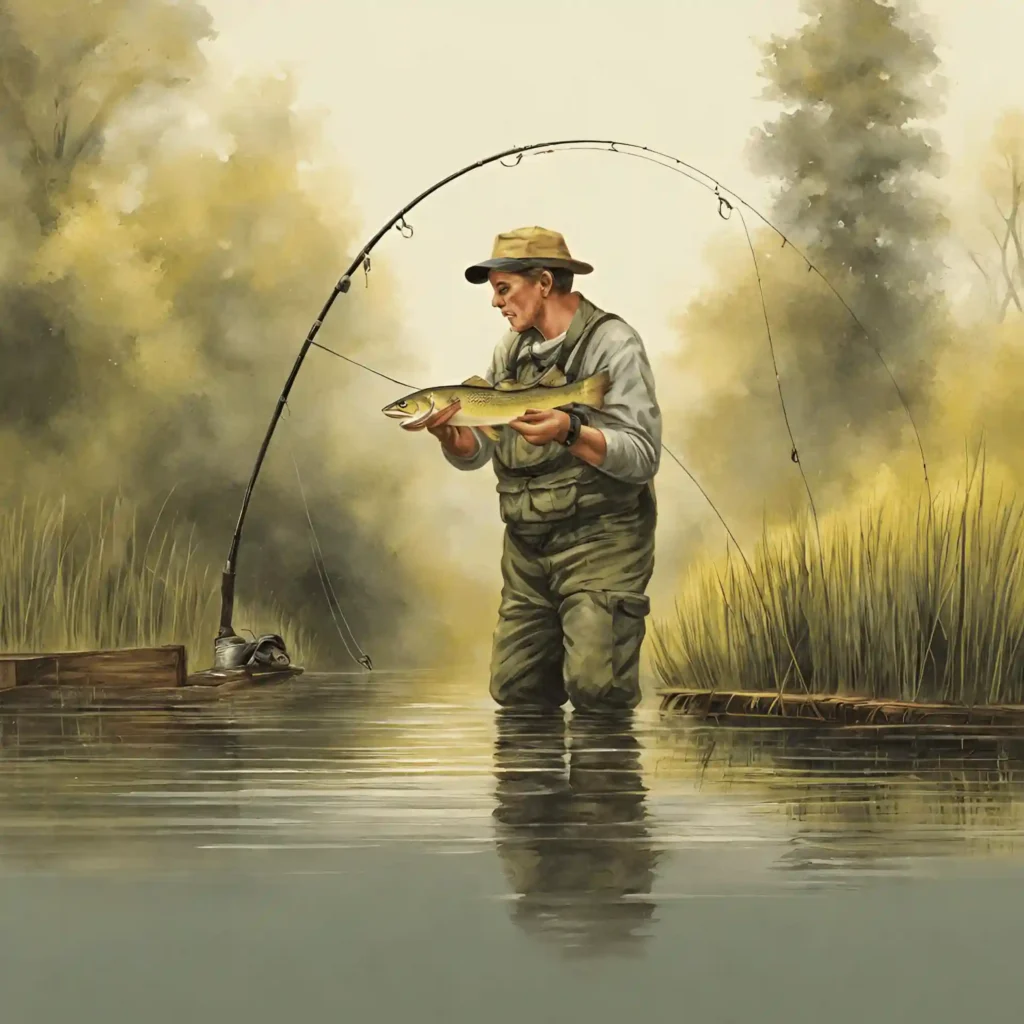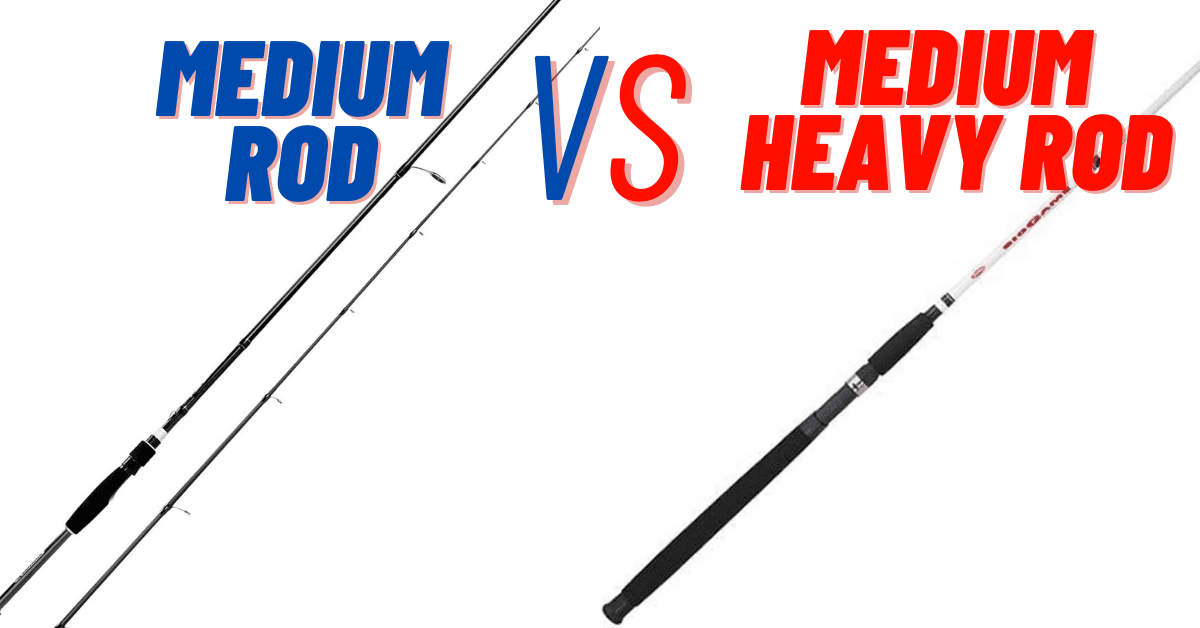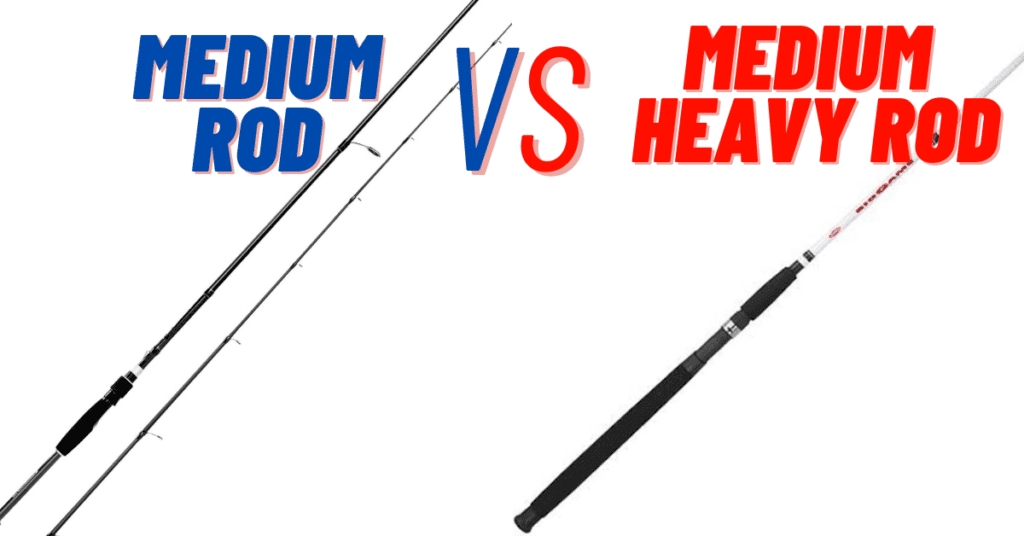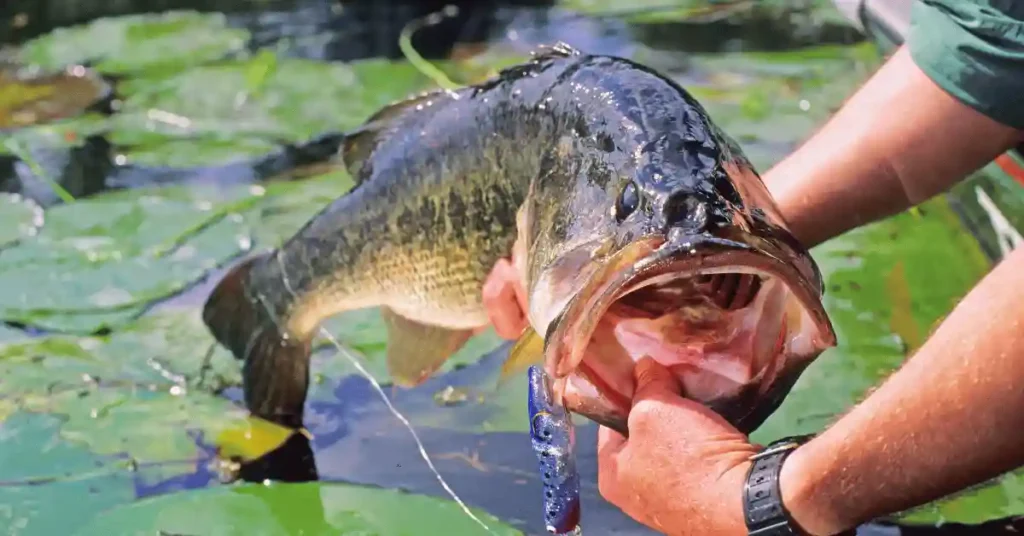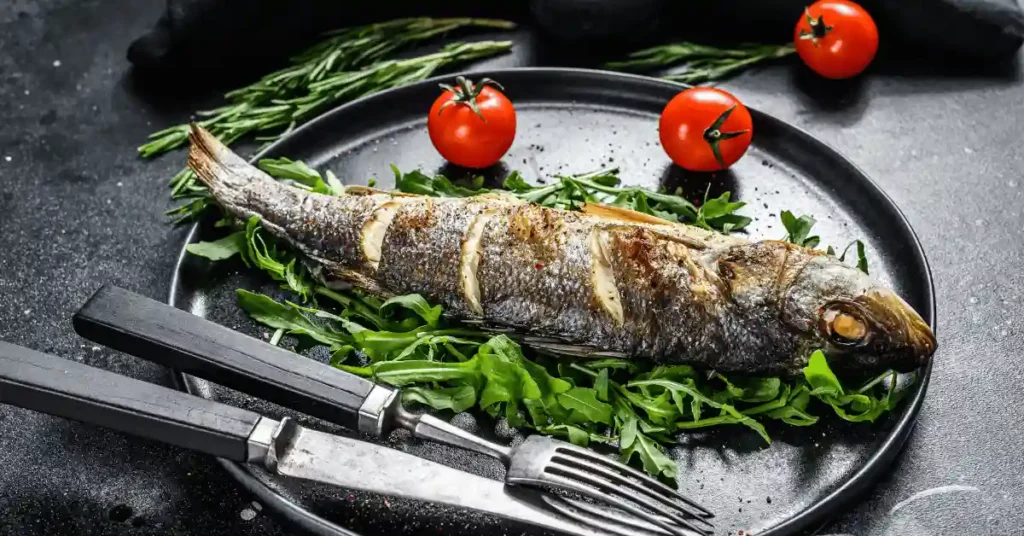Surf Perch Fishing Rules: How To Catch Surf Perch (2024)

Hey there, fellow beach lover! Ever wanted to ditch the towel and turn your beach trip into an epic fishing adventure? Surf perch are calling your name, and this guide is your golden ticket to reeling them in.
Forget about fancy gear or years of experience. We’ll show you how to catch these colorful critters with just a little know-how, some patience, and the beautiful ocean as your backdrop.
Gear Up Like a Pro (Without Breaking the Bank)
Think of your fishing gear as your surf perch wrangling tools. Here’s the lowdown on the essentials:
Selecting the Best Rod
Imagine this – your rod is like an extension of your arm, reaching out to snag those sneaky surf perch. A longer rod (think 9 to 11 feet) is ideal, but not super stiff. You want to feel those gentle nibbles, but also have some muscle to cast your bait through the waves.
Look for a rod made of graphite or composite – lightweight and tough all at once. The Okuma Rockaway SP is a champion in this category – perfect length and action for surf perch, plus it helps you cast farther and more accurately.
Here’s a quick rundown of the key features I look for in a surf fishing rod:
- Length: 9 to 11 feet
- Action: Light to medium
- Power: Medium
- Material: Graphite or composite
The right rod not only enhances my chances of a good catch but also makes the experience more enjoyable. It’s the bridge between me and the elusive surf perch.
Picking the Right Reel
A spinning reel is your best buddy for surf perch fishing, especially if you’re new to the game. Remember, saltwater is rough on everything, so find a reel that can handle it. Here’s what to keep an eye out for:
- Smooth Drag: This helps you fight those surf perch without snapping the line – like a smooth operator!
- Rustproof Power: Saltwater can be pretty nasty, so get a reel that won’t rust easily.
- The Right Size: Balance is key! A 2500 to 3000 size reel usually works well with your surf perch rod. Make sure it’s not too heavy for long casting and can hold enough line for your chosen type.
- Plenty of Line & Comfy Grip: Get a reel that holds a lot of line and has a handle that’s easy to hold onto. A smooth turn of the handle is essential for feeling those sneaky surf perch bites.
- Monofilament: More forgiving with stretch and shock absorption, easier on the wallet.
- Braided: Super sensitive with less stretch and thinner for less drag in the water. (More visible, prone to knots)
Remember, the reel’s weight should feel comfortable during long casting sessions, and its capacity should match the line you’ve chosen.
Finally, it’s worth investing in a reel with a good line capacity and a comfortable handle. A smooth retrieve can make all the difference when you’re trying to feel the subtle bites of surf perch.
Choosing the Proper Line
The line is your direct connection to the fish, so it needs to be strong enough to handle the waves. A monofilament line (around 6 to 12 pounds) is a great beginner option – it’s affordable and stretches a bit to absorb those fighting fish tugs. If you want to feel everything more and have less stretch, try braided line (same weight range). But remember, braided line is easier for fish to see and can get tangled in the wind easier. Here’s a quick cheat sheet:
- Smooth Drag: This helps you fight those surf perch without snapping the line – like a smooth operator!
- Rustproof Power: Saltwater can be pretty nasty, so get a reel that won’t rust easily.
- The Right Size: Balance is key! A 2500 to 3000 size reel usually works well with your surf perch rod. Make sure it’s not too heavy for long casting and can hold enough line for your chosen type.
- Plenty of Line & Comfy Grip: Get a reel that holds a lot of line and has a handle that’s easy to hold onto. A smooth turn of the handle is essential for feeling those sneaky surf perch bites.
Remember, the choice of line can make a significant difference in your fishing experience. It’s about finding the balance between strength, sensitivity, and manageability that suits your style.
The type of line you choose can make a big difference in your fishing experience. Find the balance between strength, how much you can feel, and how easy it is to use that works best for you. Don’t forget to check your line for nicks and tears before you head out, and replace it if it’s looking worn. A good line can mean the difference between catching a whopper and losing it all.
And for more tips and gear recommendations, I often visit the Fishing Teach website, which is a treasure trove of information for anglers like us.
Surf Perch Secrets: Finding the Fish and Their Favorite Food

Surf perch aren’t hiding in the deep blue – they’re practically your beach buddies! But knowing where they hang out and what they like to eat is key to upping your catch game.
Surf Perch 101: Habits and Hangouts
These colorful guys love staying close to shore, where the waves crash and their meals get shaken loose. Think of it as an all-you-can-eat buffet for them! Here’s the lowdown on their preferences:
- Tidal Treats: Surf perch are hungry when the tide’s rolling in, so time your trip for an incoming tide.
- Structure Snacks: They love areas with hiding spots like sandbars or holes in the seabed – perfect for them to ambush their prey.
- Dawn & Dusk Dining: Early mornings and evenings are prime feeding times, so set your alarm or pack a romantic sunset picnic (with a fishing rod, of course!).
Deception is Key: Reading the Signs
Becoming a surf perch whisperer is all about picking up on the subtle clues they leave behind. Here are some secret intel sources:
- Diving Birds: See a flock of birds dive-bombing the water? It’s likely a school of surf perch having a feeding frenzy below!
- Gentle Slopes = Happy Perch: Look for beaches with a gradual slope that lead to deeper water – this is their favorite feeding ground, especially at high tide.
Beach CSI: Finding the Perfect Perch Paradise
Not all beaches are created equal for surf perch fishing. Here’s what makes a spot a certified perch haven:
- Gentle Slopes: Easy access to deeper water for hungry perch.
- Sandbar City: These underwater structures create breaks in the waves, offering surf perch a place to hide and ambush prey.
- Crystal Clear Water: Muddy water makes it hard for perch to see your bait, so aim for clear visibility.
- Baitfish Bonanza: Spotting baitfish like anchovies or shrimp means you’ve found a feeding ground for hungry perch!
Remember, patience is your best friend. Observe the beach, the tide, and any fishy clues. The more you understand the environment, the more likely you are to land a whopper!
Surf Perch Snack Bar: The Alluring Sand Crab
Sand crabs are like surf perch candy! These tasty crustaceans live where the waves crash, so finding them is a double win – a potential fishing hotspot and fresh bait. Here’s how to become a sand crab detective:
- Wave Watch: Look for areas where the water recedes quickly, leaving behind bubbles or small holes. These might be sand crab hideouts!
- V is for Victory (and Sand Crabs): Watch for V-shaped marks in the wet sand as the water pulls back – those are sand crab trails!
- Dig It: Gently dig with your hands or a small shovel just beneath the surface of the wet sand.
- Sifting Secrets: Sift through the sand to reveal your prize – a tasty sand crab snack for the pickiest surf perch.
Remember, smaller, molting sand crabs with softer shells are typically more tempting to surf perch. Now you’ve got the intel on finding the perfect spot and their favorite food – time to cast your line and see those reels scream!
Techniques for Success
Casting Like a Champion
A smooth, underhand cast is your secret weapon. Imagine the bait skimming just above the seabed, right where hungry perch patrol. Here’s how to become a casting pro:
- Steady Base: Stand with your feet shoulder-width apart for stability.
- Grip It and Rip It (Almost): Hold the rod at waist level with a firm grip.
- The Big Swing: Swing the rod tip back towards the surf, releasing the line at the end of the forward motion.
- Target Practice: Aim for the troughs between breaking waves where those tasty treats hang out. Watch your sinker and bait fly, guiding them to your chosen zone.
Remember, smooth and controlled is the way to go. A jerky cast can tangle your line or send your bait on a wild goose chase.
Baiting Smarts: Keeping Perch Happy
The key to surf perch happiness? Mimicking their natural diet! Here’s what tickles their taste buds, especially during those winter months when sand crabs are scarce:
- Wormy Wonders: They can’t resist juicy worms.
- Shrimpy Snacks: Shrimp are another delicious option.
- Mussel Mania: Mussels offer a hearty and tempting meal.
- Clammy Delights: Clams are a classic surf perch favorite.
- Sidewinder Surprise: Sidewinder crabs can be a welcome change-up.
Presentation is key! Hook your bait so it looks natural and moves realistically in the water. Experiment with different options and see how the perch respond. Keeping a log of what works and what doesn’t helps you become a surf perch baiting genius.
The Art of the Hook Set: Patience Meets Precision
Casting and baiting are dialed in, now comes the moment of truth – setting the hook. Act too soon, and the bait disappears. Too late, and the perch might steal your offering without getting hooked. Here’s how to know when to strike:
- Feel the Force: Stay alert and hold your rod with a sensitive grip. Even subtle bites matter.
- The Tug is Real: After a nibble, wait for a steady pull – that’s your cue!
- Hook ‘Em Up: Feeling the pull? Lift the rod tip sharply to set the hook firmly in the perch’s mouth.
Patience and a quick reaction are your best friends. Setting the hook with the right timing and force significantly increases your chances of a successful catch. Once hooked, keep the line tight and reel the fish in gently, avoiding any sudden movements that might dislodge the hook. With practice, you’ll master the balance between patience and action, making surf perch fishing a truly rewarding experience.
Casting Techniques
When it comes to surf perch fishing, mastering the art of casting is crucial. I’ve found that a smooth, underhand cast often works best, allowing the bait to skim just above the bottom where surf perch feed. It’s important to cast beyond the breaking waves, aiming for the troughs between wave sets where these fish like to congregate.
A smooth, underhand cast is your secret weapon. Imagine the bait skimming just above the seabed, right where hungry perch patrol. Here’s how to become a casting pro:
- Steady Base: Stand with your feet shoulder-width apart for stability.
- Grip It and Rip It (Almost): Hold the rod at waist level with a firm grip.
- The Big Swing: Swing the rod tip back towards the surf, releasing the line at the end of the forward motion.
- Target Practice: Aim for the troughs between breaking waves where those tasty treats hang out. Watch your sinker and bait fly, guiding them to your chosen zone.
Remember, the key is to keep your movements fluid and controlled. A jerky cast can tangle your line or send your bait flying in the wrong direction.
After casting, I like to keep a close eye on the line’s tension. Surf perch bites can be subtle, and a tight line helps in detecting those gentle tugs. I’ve experimented with various surf fishing rigs, including the fish finder rig and the high low rig, which are both excellent choices for targeting surf perch.
Baiting Strategies
When it comes to baiting strategies for surf perch, I’ve learned that the key is to mimic their natural prey. During the winter months, especially in December, the usual sand crabs are scarce, and surf perch are on the lookout for alternative food sources. This is when I switch my tactics and opt for baits that are readily available and attractive to these fish.
Here’s a quick rundown of the best baits to use during this time:
- Wormy Wonders: They can’t resist juicy worms.
- Shrimpy Snacks: Shrimp are another delicious option.
- Mussel Mania: Mussels offer a hearty and tempting meal.
- Clammy Delights: Clams are a classic surf perch favorite.
- Sidewinder Surprise: Sidewinder crabs can be a welcome change-up.
Remember, the goal is to present the bait in a way that looks natural to the perch. This means paying attention to how the bait is hooked and how it moves in the water.
Experimenting with different baits and observing the surf perch’s response is crucial. Sometimes, a slight change in bait can make a significant difference in your catch rate. Keep a log of what works and what doesn’t, and you’ll soon develop a keen sense for what the surf perch are after.
Setting the Hook
Once you’ve mastered the art of casting and have your bait strategically placed where the surf perch are feeding, it’s time to focus on setting the hook. This moment is critical; too soon, and you risk pulling the bait away from the fish. Too late, and the perch may spit out the bait or steal it without getting hooked.
Here’s a simple guide to help you know when to set the hook:
- Feel for the bite: Stay alert and keep a sensitive grip on your rod. Surf perch bites can be subtle.
- Wait for the pull: After you feel a nibble, wait for a steady pull. This indicates the fish has taken the bait.
- Set the hook firmly: Once you feel the pull, lift the rod tip sharply upwards to set the hook in the fish’s mouth.
Remember, the key is to be patient and react quickly once you’re sure the fish has taken the bait. Setting the hook with the right timing and force will greatly increase your chances of a successful catch.
After setting the hook, keep the line tight and guide the fish gently towards the shore. Avoid reeling in too fast or with too much force, as this can cause the hook to tear free. With practice, you’ll develop a feel for the right balance between patience and swift action that makes surf perch fishing so rewarding.
Safety Precautions for Surf Perch Fishing
Ensuring a safe and successful surf perch fishing excursion begins with understanding and respecting the ocean’s dynamics. Tide times, sneaker waves, and sun exposure all play pivotal roles in safeguarding yourself and maximizing your fishing experience.
1. Checking Tide Times
Before embarking on your surf perch fishing trip, it’s essential to consult local tide charts. Tides significantly influence surf perch behavior, with high tide presenting optimal fishing conditions due to increased water depth and fish activity.
Here’s a concise checklist to follow:
- Refer to the local tide chart at least a day before your outing.
- Target fishing 1-2 hours prior to high tide for prime conditions.
- Remain vigilant of tide changes while fishing to avoid potential hazards.
Remember, staying informed about tide patterns not only enhances fishing success but also prioritizes safety by minimizing risks associated with changing water levels.
2. Watching for Sneaker Waves
While focusing on landing that perfect catch, it’s crucial to maintain awareness of the ocean’s dynamics, particularly the threat of sneaker waves. These unpredictable surges can pose significant dangers, even to experienced anglers.
To mitigate risks, adhere to these guidelines:
- Maintain constant vigilance over the ocean, especially during baiting or handling fish.
- Avoid turning your back to the water to prevent surprise wave surges.
- Maintain a safe distance from the water’s edge, especially during high tide periods.
Respecting the ocean’s power is paramount, as conditions can swiftly escalate, turning an enjoyable fishing trip into a perilous situation.
3. Protecting Against Sun Exposure
Amid the excitement of surf perch fishing, it’s easy to overlook the sun’s potentially harmful effects. Prioritizing sun protection is not only essential for comfort but also crucial for maintaining good health.
Here’s a sun safety regimen to follow:
- Apply broad-spectrum sunscreen before venturing onto the beach.
- Reapply sunscreen every two hours or after swimming or sweating.
- Ensure all exposed skin is adequately covered to prevent sunburn.
Even on overcast days, UV rays can penetrate cloud cover, necessitating consistent sun protection measures.
Additionally, wearing a wide-brimmed hat, UV-blocking sunglasses, and seeking shade during peak sun hours further minimizes sun exposure risks.
At Fishing Teach, we’re dedicated to ensuring your safety while enhancing your fishing adventures. Explore our comprehensive ‘Safety Precautions’ section for invaluable insights into preparing for various fishing scenarios. Don’t let uncertainty dampen your enjoyment—visit our website today for expert guidance and resources.
Conclusion
Concluding Thoughts on Surf Perch Fishing
In conclusion, surf perch fishing offers an exhilarating and fulfilling experience suitable for anglers of all levels of expertise. By implementing the strategies and insights provided in this guide, you can significantly enhance your chances of a successful catch and a memorable fishing excursion.
Remember to prioritize environmental stewardship, adhere to local regulations, and embrace responsible fishing practices to safeguard the sustainability of this cherished pursuit. So, equip yourself, venture to the shoreline, and embark on an adventure to reel in those prized surf perch!
Frequently Asked Questions
What is the best time of day to fish for surf perch?
Early morning or late afternoon are typically the best times to fish for surf perch when they are most active.
What is the recommended bait for surf perch fishing?
Sand crabs, shrimp, and bloodworms are popular baits for surf perch fishing.
How deep should I cast my line when surf perch fishing?
It is recommended to cast your line into the troughs where the surf perch are feeding, which can vary in depth depending on the beach conditions.
Do I need a fishing license to fish for surf perch?
Yes, a valid fishing license is required to fish for surf perch in most locations.
What is the best rod length for surf perch fishing?
A medium to medium-heavy rod around 7 to 9 feet in length is ideal for surf perch fishing.
How can I avoid getting tangled in seaweed while surf perch fishing?
Using a high-quality braid line and keeping your bait off the bottom can help reduce the chances of getting tangled in seaweed while fishing for surf perch.

Meet Ibrahim Khan, an avid angler and author in Fishing Teach. He shares his wealth of knowledge from his 16 years of experiences in fishing. His articles are a captivating blend of practical insights and thrilling tales that invite readers into the enchanting world of fishing.
Ibrahim’s guides are your go-to guide in the realm of fishing on this informational site. Hailing from a coastal paradise, Ibrahim’s passion for angling is the heartbeat of his life.




